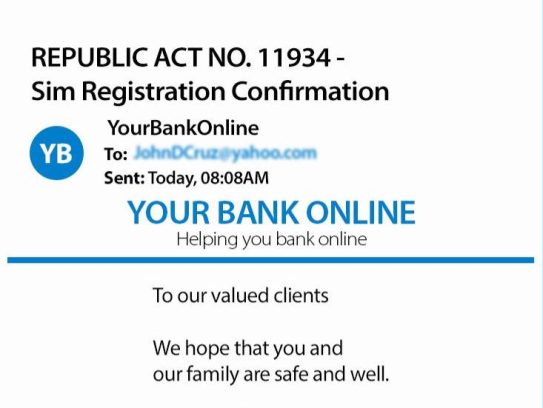Also known as Security upgrade scam
Where it is usually done: Email (Phishing), SMS (Smishing), Voice Call (Vishing)
How it can look

- Scammers often make claims like this without knowing your actual usage.
- The threat of account suspension or closure is used a lot by scammers to scare people into performing an action.
- The link will lead you to a fake website that will steal your personal details.
- Scammers will pretend to represent your bank or provider.
Simulated. View image 🠑
What it is
This is when a scammer who claims to be from your bank, credit card company or other provider makes you click a link to log in to your account, or gets your login details such as user name and password.
If you give your information, the scammer will use it to access your real account and steal your money. He or she may even use your account to do illegal things like launder money and buy banned items.
Don’t be a victim of the account takeover scam. Never provide any personal or financial details and never open any links from an email or SMS.
What you should do
his is when a scammer who claims to be from your bank, credit card company or other provider makes you click a link to log in to your account, or gets your login details such as user name and password.
If you give your information, the scammer will use it to access your real account and steal your money. He or she may even use your account to do illegal things like launder money and buy banned items.
Don’t be a victim of the account takeover scam. Never provide any personal or financial details and never open any links from an email or SMS.



